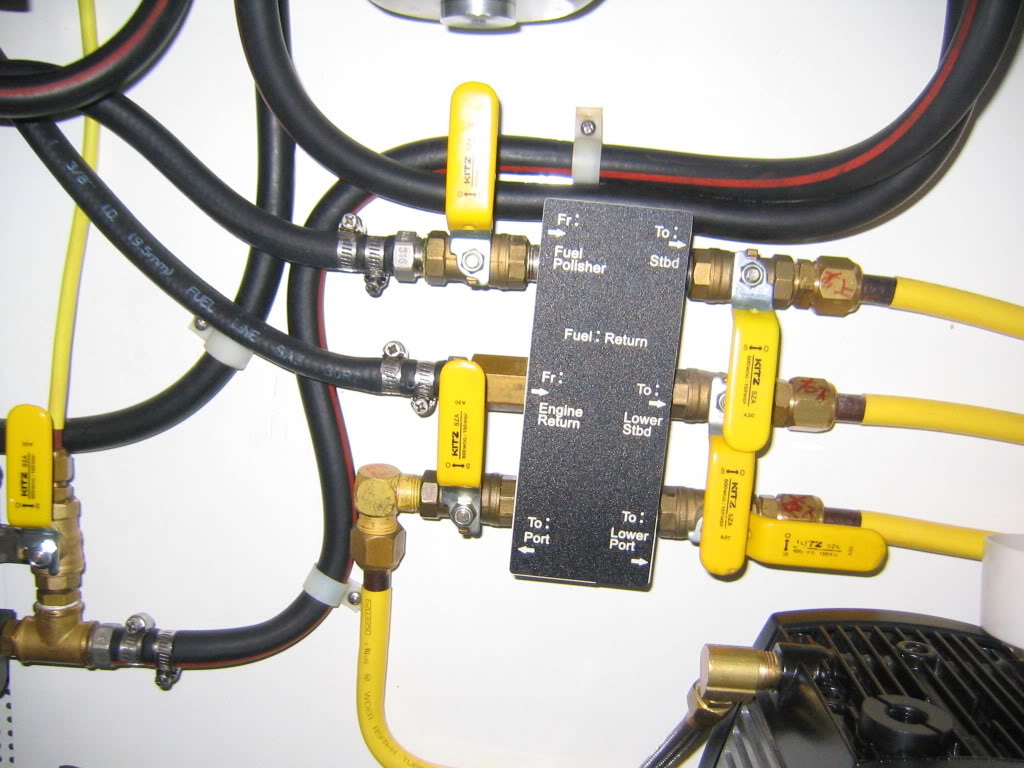db2
Veteran Member
I would like to invite comments on the fuel delivery system of my Californian 42LRC with twin Perkins 6.354Ts. Each engine runs on 2 tanks, the 4 tanks are not interconnected. The port tanks are 150 gal new aluminum. The outlets are at the bottom and there is a manifold with 2 petcocks. The returns are at the top and there is a manifold, but no petcocks. Obviously, the design is to run the port engine off of these 2 tanks simultaneously. The starboard side is the same but the tanks are steel and there is a tee after the filters to run the generator.
I guess I could just run it this way but I am tempted to at least install petcocks for the returns so that I can run each engine off of either or both tanks. Should I consider connecting the manifolds and setting it up to run the engines off of any of the 4 tanks? Also, the fuel lines are well made rubber with swivel gas type brass fittings with swagged collars. should I stay with these if changes are made or are barb fittings with hose clamps OK. I have a small electric pump with filters that I was planning to use as a transfer/polish system, but it would certainly make the plumbing more complex.
I guess I could just run it this way but I am tempted to at least install petcocks for the returns so that I can run each engine off of either or both tanks. Should I consider connecting the manifolds and setting it up to run the engines off of any of the 4 tanks? Also, the fuel lines are well made rubber with swivel gas type brass fittings with swagged collars. should I stay with these if changes are made or are barb fittings with hose clamps OK. I have a small electric pump with filters that I was planning to use as a transfer/polish system, but it would certainly make the plumbing more complex.



